Why the Dell XPS 13 Beats the Lenovo Yoga 920 (But Just Barely)
If you're looking for a premium ultraportable notebook, you've probably come across the Dell XPS 13 and the Lenovo Yoga 920.
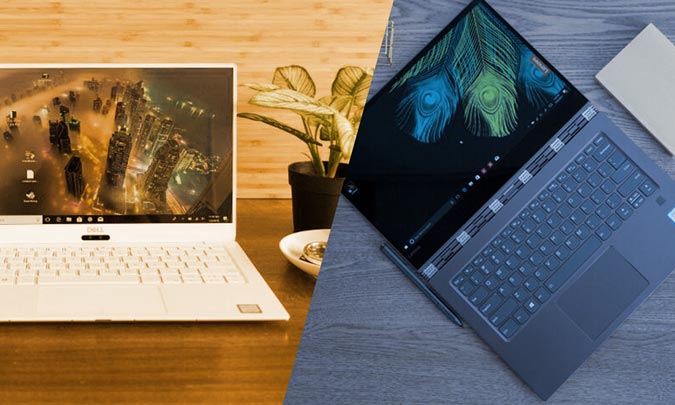
Not only are they both superfast, with 8th Gen Intel CPUs, but they also look fantastic and weigh less than 3 pounds. But they've got significant differences and appeal to different kinds of users.
| Row 0 - Cell 0 | Dell XPS 13 | Lenovo Yoga 920 |
| Starting Price | $999 | $1,179 |
| CPU | 8th Gen Intel Core i5, i7 | 8th Gen Intel Core i5, i7 |
| GPU | Intel UHD 620 (Integrated) | Intel UHD 620 (Integrated) |
| Display | 13.3 inches, 1920 x 1080 / 3840 x 2160 | 13.9 inches, 1920 x 1080 |
| Ports | 1 USB Type-C, 2 Thunderbolt, fingerprint reader, headphone jack, microSD reader | 1 USB 3.0, 2 Thunderbolt, fingerprint reader, headphone jack |
| Battery Life | 12:34 (1080p) / 8:23 (4K) | 10:14 |
| Size | 12 x 7.9 x 0.5 inches | 12 x 8.6 x 0.5 inches |
| Weight | 2.7 pounds | 2.9 pounds |
To help aid your shopping experience, we've compared the two, using our testing data from our extensive reviews as well as testing them out side by side in our offices. After comparing these systems based on their design, ports, keyboard, display, performance, battery life and value, one laptop has come away with a narrow victory.
Design
Both the Lenovo Yoga 920 and Dell XPS 13 look stunning. So, no matter if you prefer the rose gold beauty of the XPS 13 or the luxurious watchband hinges of the Yoga 920, you're taking home a piece of hardware that's easy on the eyes.
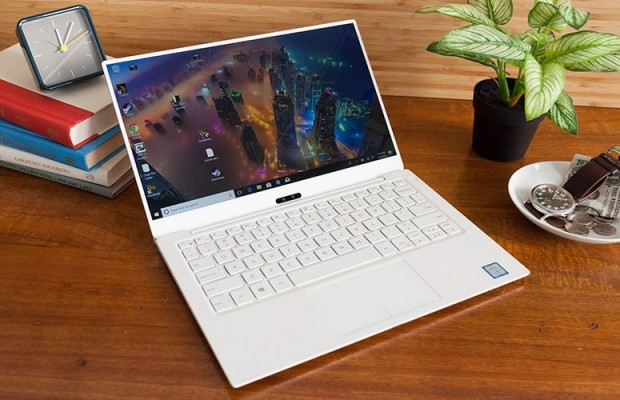
Even better, the customizable Yoga 920 can be configured in Copper, Platinum or Bronze, without any fee for the paint. Dell charges you $50 to upgrade from an all-black design to its rose gold shell with an "Alpine White woven glass fiber" keyboard deck, because it knows we're shallow people.
And while we love the thinner bezels of the XPS 13, that feature has pushed Dell to move the webcam to the bottom bezel, so colleagues will be looking at your torso and not your face.
Stay in the know with Laptop Mag
Get our in-depth reviews, helpful tips, great deals, and the biggest news stories delivered to your inbox.
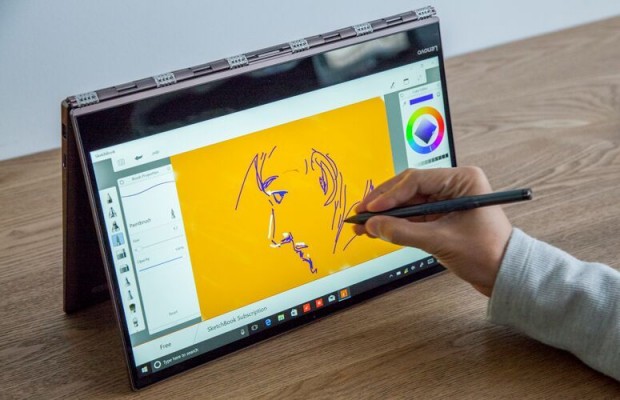
The Dell XPS 13 may be thinner (0.46 inches compared to the Yoga 920's 0.55 inches) and lighter (2.65 pounds versus 3.05 pounds, respectively), but the Yoga 920 makes up for it with a 13.9-inch screen, compared to the XPS 13's 13.3-inch screen.
The Yoga 920, though, is a convertible 2-in-1, giving you tablet and laptop experiences. The XPS 13 is always just a laptop, though it can be customized with a touch screen.
Winner: Yoga 920
Ports
Both the Dell XPS 13 and Lenovo Yoga 920 pack dual Thunderbolt 3 ports, but they're not exactly the same. In addition, the XPS 13 packs a 3.5-millimeter audio jack (as does the Yoga 920), a microSD card slot and a USB Type-C port, which supports DisplayPort video.
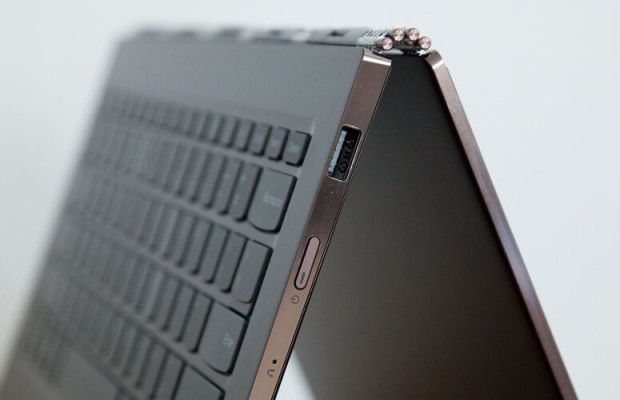
In addition to its Thunderbolt 3 ports, the Yoga 920 comes with a USB 3.0 port, so you don't need to remember to pack an adapter dongle or use a docking station to connect to traditional USB devices. For those who haven't replaced all their USB 3.0 devices with Type-C versions, that traditional port can be the most important factor. Both have fingerprint readers, though you might not notice the XPS 13's, which is built into its power button.
Winner: Yoga 920
Display
The Dell XPS 13's InfinityEdge display not only gives it the smaller bezels, but wow, its screen is also brilliant. Watching a Pacific Rim Uprising trailer on both machines, side by side, I saw the advantage go to the XPS 13, where fires burned with stronger oranges, holographic Jager controls popped with more vibrant blues, and black shadows looked even truer, with inkier tones.
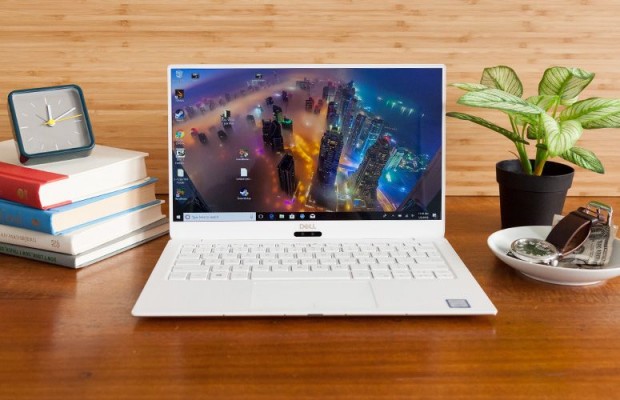
The XPS 13 has the brighter display; its 1080p screen emits a maximum of 360 nits, topping the Yoga 920's 284 nits. If you opt for the 4K screen, it's an even brighter 415 nits.
The XPS 13 also takes home the title for more colorful display, with a 1080p panel that produces 117 percent of the sRGB spectrum, which exceeds the Yoga 920's 105 percent mark. Again, the XPS 13's 4K screen is even better, measuring 130 percent.
The Yoga 920's screen does support 10-finger touch input, though. You can buy the XPS 13 with a touch screen, but you'll spend at least $600 more on that $1,599 configuration, because the entry-level, $999 model doesn't pack it.
Winner: XPS 13
Keyboard
Comfort is king when it comes to keyboards, and so it's more about the experience than the measurements. So, yes, the keys in the Yoga 920 have slightly more vertical travel (1.3 mm versus 1.2 mm for the XPS 13), but typing on the XPS 13 simply feels better.
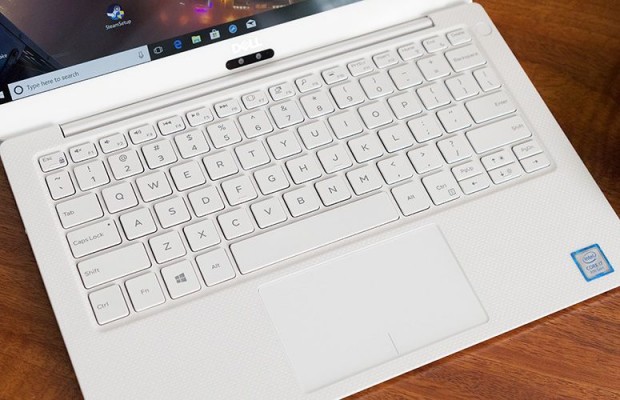
This may be due to the other measurement we took, wherein it takes 72 grams of force to actuate the XPS 13' keys, which is greater than the 68-gram measurement from the Yoga 920. And while the Yoga may have slightly taller keys, when you type on them, it feels like your fingertips are hitting the deck of the keyboard immediately after you begin to press.
Winner: XPS 13
Performance
Despite comparing a Dell XPS 13 and Lenovo Yoga 920 when they both have the same Intel Core i7-8550U processor and 8GB of memory, one still stands out.
The XPS 13's first victory comes with the Geekbench 4 general performance test, where its 14,180 score beat the Lenovo Yoga 920's 13,306. Then, the XPS 13's 256GB SSD duplicated a DVD's worth of multimedia files at a rate of 339.2 MBps, while the Lenovo Yoga 920's 256GB SSD posted a slower rate of 299.9 MBps.
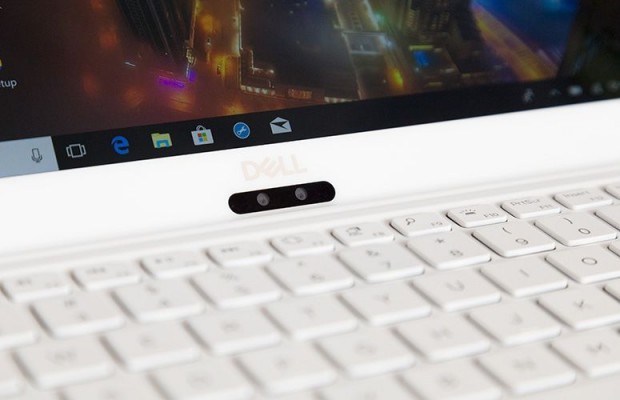
The XPS 13 also finished our Excel VLookup test in a shorter amount of time: 1 minute and 6 seconds, which is 26 percent less time than it took for the Yoga 920 (1:29).
Another XPS 13 win came on our HandBrake video-transcoding test, which measures the time it takes to convert a 4K video to 1080p. The XPS 13 finished in 16 minutes, while the Yoga 920 required another 7 minutes and 16 seconds to reach its 23:16 time.
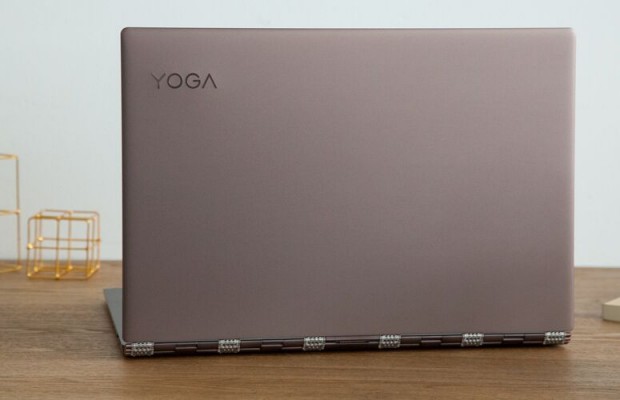
Both notebooks feature the same integrated Intel UHD 620 graphics and took home similar scores on the Ice Storm Unlimited graphics benchmark, with the XPS 13 netting a 85,616 and the Yoga 920 earning a slightly higher 86,267. The XPS 13, though, ran the Dirt 3 racing game (set to medium graphics at 1080p) at a faster 67 frames per second, exceeding the Yoga 920's rate of 35fps.
Winner: XPS 13
Battery Life
Both the XPS 13 and Yoga 920 offer decent battery life, but one goes longer. That's the XPS 13, which lasted an epic 12 hours and 34 minutes on the Laptop Mag Battery Test (for the 1080p version, 2 hours and 20 minutes more than the Yoga 920 (10:14). The 4K XPS 13 lasted 8 hours and 23 minutes on the same test.
Winner: XPS 13
Value
The XPS 13 starts at a lower price of $999, but it doesn't offer as much as the slightly pricier $1,179 Yoga 920. For starters, the Yoga is a convertible 2-in-1 (the XPS 13 is not), and the intro-level XPS 13 has half as much RAM and storage (4GB of RAM and 128GB of storage, compared to the Yoga 920's 8GB and 256GB).
Winner: Yoga 920
Bottom Line
| Row 0 - Cell 0 | Dell XPS 13 | Lenovo Yoga 920 |
| Design | Row 1 - Cell 1 | Row 1 - Cell 2 |
| Ports | Row 2 - Cell 1 | Row 2 - Cell 2 |
| Display | Row 3 - Cell 1 | Row 3 - Cell 2 |
| Keyboard | Row 4 - Cell 1 | Row 4 - Cell 2 |
| Performance | Row 5 - Cell 1 | Row 5 - Cell 2 |
| Battery Life | Row 6 - Cell 1 | Row 6 - Cell 2 |
| Value | Row 7 - Cell 1 | Row 7 - Cell 2 |
| Overall Score | 4 | 3 |
The Dell XPS 13 and Lenovo Yoga 920 are two very evenly matched laptops, each with rakish good looks, similar configuration options and long battery life. The XPS 13, though, took four rounds, narrowly defeating the Yoga 920, which took three.
Still, the Yoga 920 is an excellent convertible notebook, and the one to get if you're looking for a hybrid machine. Its screen, speed and battery life may not be as great as the XPS 13's, but they're still damn good.
But at the end of the day, if you're asking me which one I'd pick, I'd go with the XPS 13. Not only is it lighter, but I'm also willing to trade away a convertible design for a comfier typing experience and hours of extra battery life.
Dell XPS 13 User Guide
Henry was a contributing writer at Laptop Mag. He penned hundreds of articles, including helpful how-tos for Windows, Mac, and Gmail. Henry has also written about some of the best Chromebooks, and he has reviewed many Apple devices, including various MacBook Air laptops. He is now a managing editor at our sister site Tom's Guide, covering streaming media, laptops, and all things Apple.
